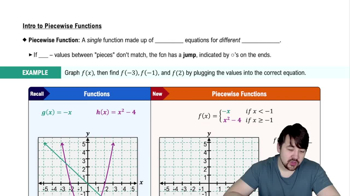a. Graph the function
ƒ(x) = { x, -1 ≤ x < 0
{ tan x, 0 ≤ x ≤ π/4.
b. Is ƒ continuous at x = 0?
c. Is ƒ differentiable at x = 0?
Give reasons for your answers.
 Verified step by step guidance
Verified step by step guidance Verified video answer for a similar problem:
Verified video answer for a similar problem:



 5:02m
5:02mMaster Determining Differentiability Graphically with a bite sized video explanation from Patrick
Start learning